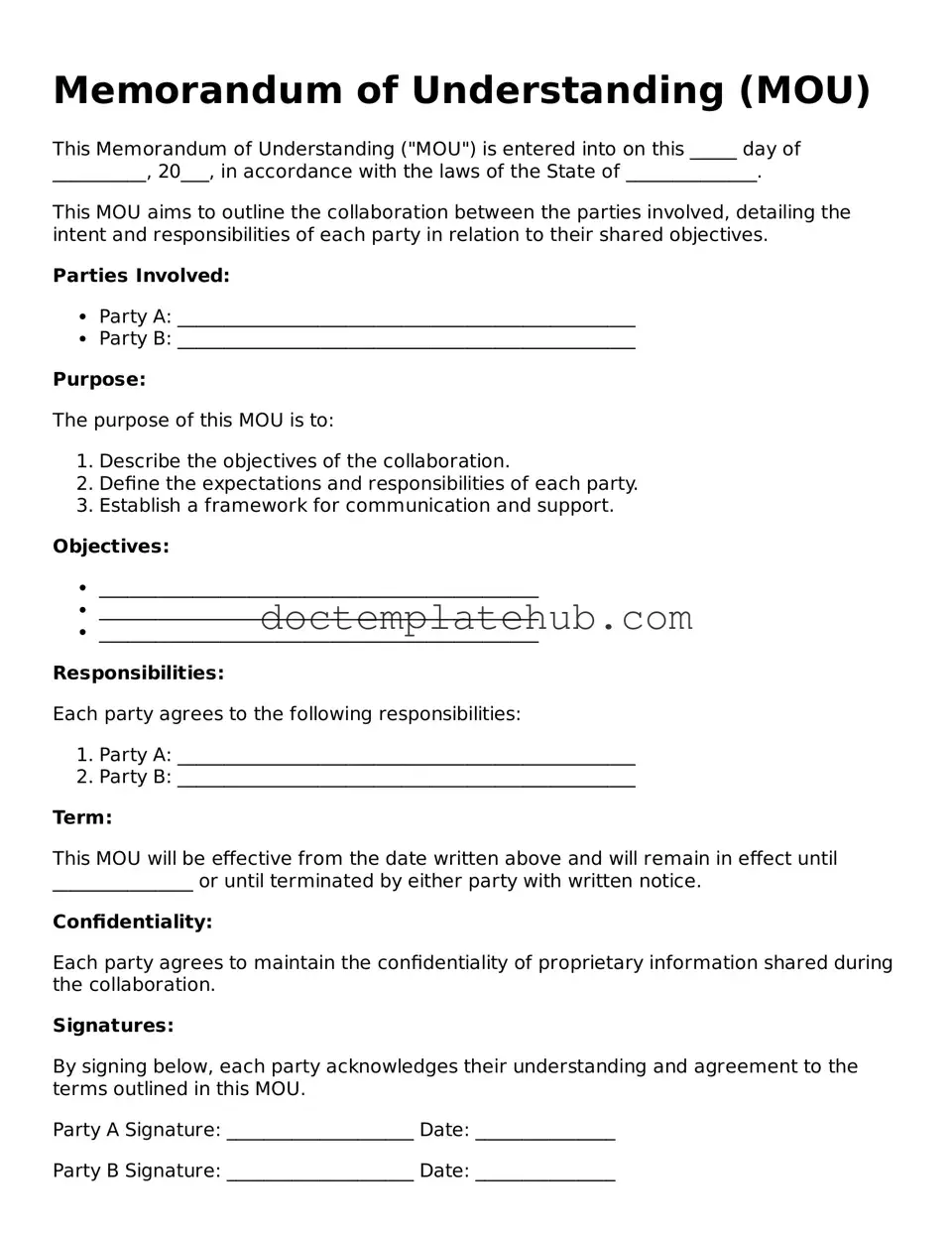What is a Memorandum of Understanding (MOU)?
A Memorandum of Understanding is a document that outlines an agreement between two or more parties. It describes the intentions and responsibilities of each party involved. While it is not legally binding like a contract, it serves as a formal way to express a mutual understanding and can help guide future actions.
When should I use an MOU?
An MOU is useful when parties want to establish a clear understanding of their roles and responsibilities without entering into a legally binding contract. It is often used in collaborations, partnerships, or joint ventures where the parties wish to outline their intentions before formalizing a more detailed agreement.
What should be included in an MOU?
An effective MOU typically includes the following elements: the purpose of the agreement, the roles and responsibilities of each party, the timeline for completion, any financial commitments, and how disputes will be resolved. Clarity in these areas can help prevent misunderstandings in the future.
Is an MOU legally binding?
Generally, an MOU is not considered legally binding. However, certain elements within the MOU can create enforceable obligations if the parties intend for them to be binding. It is important to clearly state the intentions of the parties regarding the binding nature of the document.
How do I draft an MOU?
To draft an MOU, start by clearly defining the purpose of the agreement. Next, outline the roles and responsibilities of each party. Include any timelines, financial commitments, and dispute resolution methods. Finally, ensure that all parties review the document and agree to its terms before signing.
Can an MOU be modified after it is signed?
Yes, an MOU can be modified after it is signed. Any changes should be documented in writing and agreed upon by all parties involved. It is advisable to specify how modifications can be made within the MOU itself to avoid confusion later on.
What happens if one party does not fulfill their obligations in the MOU?
If one party fails to fulfill their obligations, the other party may address the issue through communication. Since an MOU is typically not legally binding, the options for recourse may be limited. However, having a clear outline of responsibilities can help facilitate discussions and potential resolutions.
Do I need a lawyer to create an MOU?
While it is not necessary to have a lawyer draft an MOU, consulting one can be beneficial, especially for complex agreements. A lawyer can provide guidance on the language used and ensure that the document reflects the intentions of all parties involved.
